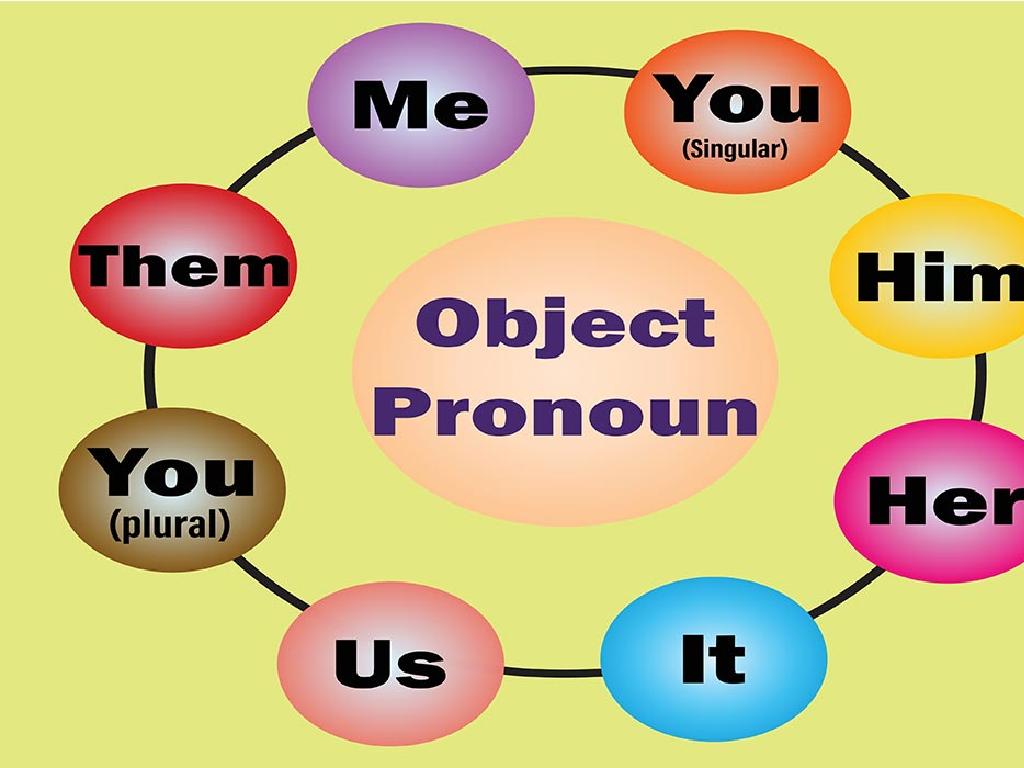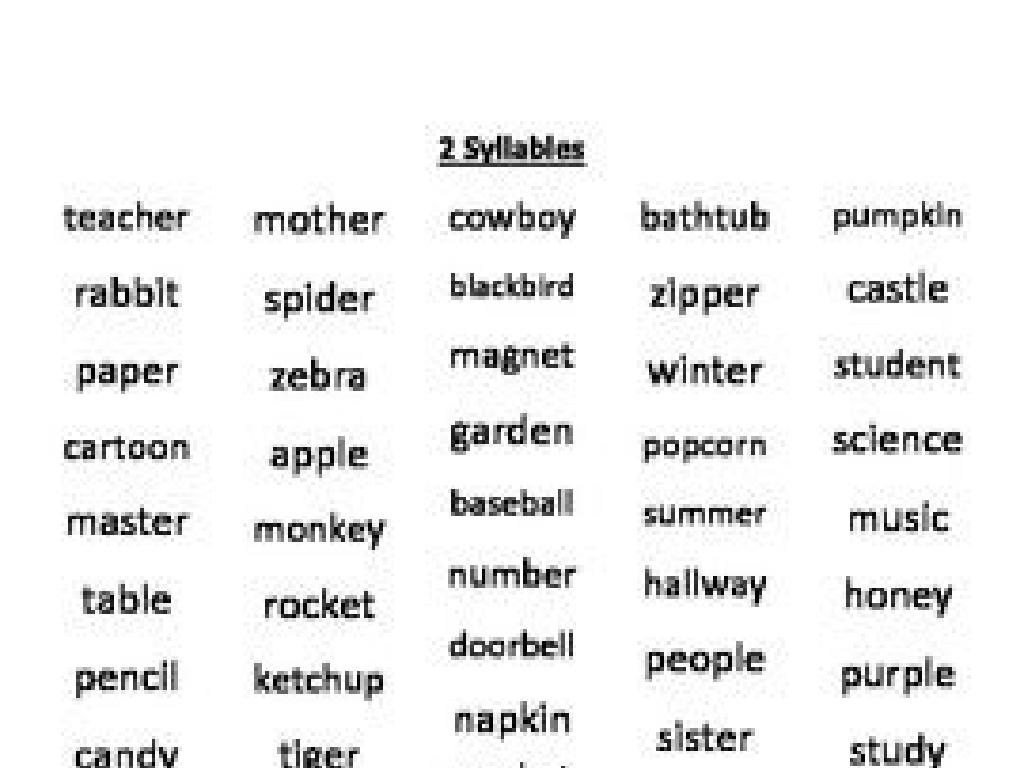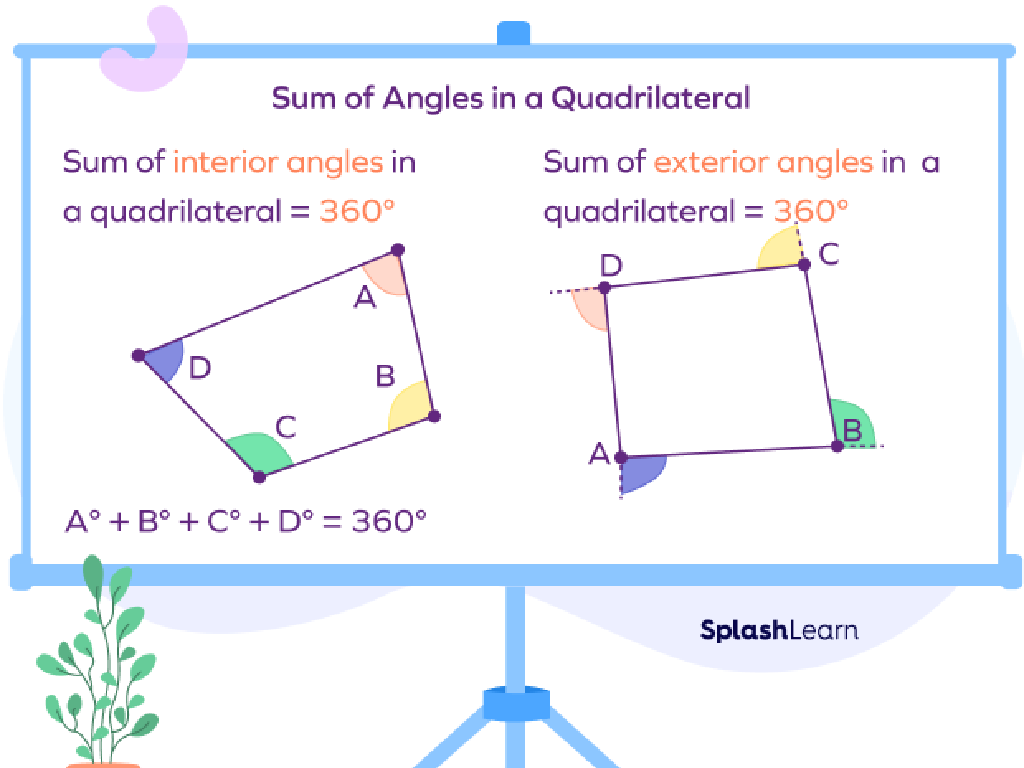How Do Balanced And Unbalanced Forces Affect Motion?
Subject: Science
Grade: Third grade
Topic: Force And Motion
Please LOG IN to download the presentation. Access is available to registered users only.
View More Content
Welcome to the World of Forces!
– Greeting and topic introduction
– Share your ideas about force
– What do you think force is? How do things move?
– Forces explain motion
– Force is a push or pull that can make things move or stop.
– Balanced vs. Unbalanced forces
– Balanced forces don’t change motion, unbalanced forces do.
|
Begin the class with a warm welcome and introduce the topic of forces and motion. Engage the students by asking them to share any prior knowledge or experiences related to force and motion. This will help assess their understanding and make the lesson more interactive. Explain that forces are pushes or pulls that can cause objects to move, stop, or change direction. Highlight the difference between balanced forces, which do not change an object’s motion, and unbalanced forces, which do. Use simple examples like playing tug-of-war (balanced) versus one person pulling a toy car (unbalanced) to illustrate the concepts.
Understanding Force: Pushes and Pulls
– Force: a push or a pull
– Force can make things move, stop, or change direction.
– Examples of push and pull
– Pushing a swing, pulling a wagon
– Force in everyday life
– Opening doors, playing sports
– How force moves things
– Without force, nothing would start moving or stop.
|
This slide introduces the concept of force to third-grade students by defining it as a push or a pull. Use relatable examples to illustrate both push and pull forces, such as pushing a friend on a swing or pulling a wagon. Highlight how force is involved in many common activities, like opening doors or playing sports. Emphasize that force is necessary to make objects move, stop, or change their direction. Encourage students to think of other examples from their daily lives where they use force. This will help them understand the fundamental role force plays in motion and prepare them for learning about balanced and unbalanced forces.
Understanding Balanced Forces
– Balanced forces are equal and opposite
– No change in motion with balanced forces
– When forces are balanced, they cancel out and the object doesn t move
– Example: Book on a table
– The book doesn t move because the force of gravity and the table s support are equal
– Example: Tug-of-war game
– Equal teams pulling with the same strength means the rope stays in place
|
This slide introduces the concept of balanced forces to third-grade students. Balanced forces occur when two forces acting in opposite directions on an object are equal in size, resulting in no change in the object’s motion. It’s important to use simple, relatable examples to illustrate this concept. A book on a table remains stationary because the force of gravity pulling it down is balanced by the force of the table pushing it up. Similarly, in a tug-of-war game, if both teams are equally strong, the rope does not move; this is because the pulling forces are balanced. Use diagrams to visually demonstrate these scenarios to the students, and encourage them to think of other examples of balanced forces they might encounter in their daily lives.
Understanding Unbalanced Forces
– Unbalanced forces are not equal
– They cause motion changes
– Example: Kicking a soccer ball
– When a ball is still and then kicked, it moves because of the unbalanced force applied.
– Unbalanced forces in action
– They make objects start, stop, or change direction.
|
This slide introduces the concept of unbalanced forces to third-grade students. Unbalanced forces occur when two forces acting on an object are not equal in size, causing the object to move or change its motion. For example, when a soccer ball is kicked, the force of the foot kicking the ball is greater than the force of gravity and friction acting on the ball, causing it to move. This illustrates how unbalanced forces can make an object start moving, stop moving, or change direction. It’s important to convey that motion is the result of unbalanced forces acting on an object. Encourage students to think of other examples where unbalanced forces cause a change in motion, such as pushing a toy car or pulling a wagon.
Effects of Unbalanced Forces on Motion
– Unbalanced forces cause changes
– They can speed up objects
– Like a car zooming ahead when a traffic light turns green
– They can slow down movement
– Like using brakes on a bike to slow down
– They can change direction
– Like a soccer ball changing direction when kicked
|
This slide aims to explain the concept of unbalanced forces and their effects on the motion of objects, which is a fundamental principle in physics. Unbalanced forces are necessary to start, stop, or change the direction of an object’s motion. Without them, an object would either remain at rest or continue to move at the same speed and in the same direction. Use everyday examples to illustrate these concepts, such as a car accelerating at a green light, a person applying force to stop a rolling ball, or the change in direction of a soccer ball when it’s kicked. These relatable scenarios will help students grasp how unbalanced forces are at play in their daily lives and understand the basics of motion in a tangible way.
Gravity: A Special Force
– Gravity pulls towards Earth’s center
– Gravity: an unbalanced force in action
– When objects fall, it’s gravity at work, not balanced by other forces
– Gravity’s role in our daily lives
– Keeps us on the ground, causes objects to drop
– Understanding gravity’s impact
– Helps us learn why we don’t float away
|
This slide introduces gravity as a fundamental force that constantly affects our daily lives. Start by explaining that gravity is the force that pulls everything towards the center of the Earth. This is why when we jump, we always come back down. Gravity is an example of an unbalanced force when it causes an object to fall because there is no other force acting against it with equal power. In our daily lives, gravity is what keeps us firmly on the ground and causes things to fall when we drop them. It’s important for students to understand that without gravity, life would be very different, and we would not be able to walk or stay put. Use simple activities like dropping various objects to demonstrate gravity in action and encourage students to think about how gravity affects them every day.
Class Activity: Exploring Forces with Toy Cars
– Pair up for a force experiment
– Set up ramps and toy cars
– Use ramps for incline; add objects to create balance or imbalance
– Predict car motion with forces
– Guess if cars will move, stop, or change speed
– Observe and record results
– Watch what happens and write it down
|
In this hands-on activity, students will work in pairs to understand how balanced and unbalanced forces affect motion. Provide each pair with a toy car, a ramp, and various objects to create scenarios where forces are balanced (car stays still or moves at constant speed) and unbalanced (car accelerates or decelerates). Before conducting the experiment, ask students to predict the outcome based on the setup. After making their predictions, students will conduct the experiment and observe the car’s motion, noting whether it matched their prediction. This activity will help them grasp the concept of force and motion through practical application. Possible variations include changing the ramp’s incline, the car’s weight, or the surface texture to explore different outcomes.
Conclusion: Forces and Motion
– Recap on balanced forces
– Balanced forces don’t change an object’s motion
– Recap on unbalanced forces
– Unbalanced forces cause objects to start moving, stop, or change direction
– How forces affect motion
– For example, tug-of-war showed balanced forces, while pushing a toy car showed unbalanced forces
– Share and question time
|
As we wrap up today’s lesson, let’s review the main points. Balanced forces are equal in size but opposite in direction and they do not change an object’s motion. Unbalanced forces, on the other hand, are not equal and cause a change in motion, such as starting to move, stopping, or changing direction. Reflect on the class activities, like the tug-of-war, which demonstrated balanced forces, and the toy car, which showed unbalanced forces in action. Encourage students to share their understanding and ask any questions they might have. This is a great opportunity to assess their comprehension and clarify any misconceptions.






